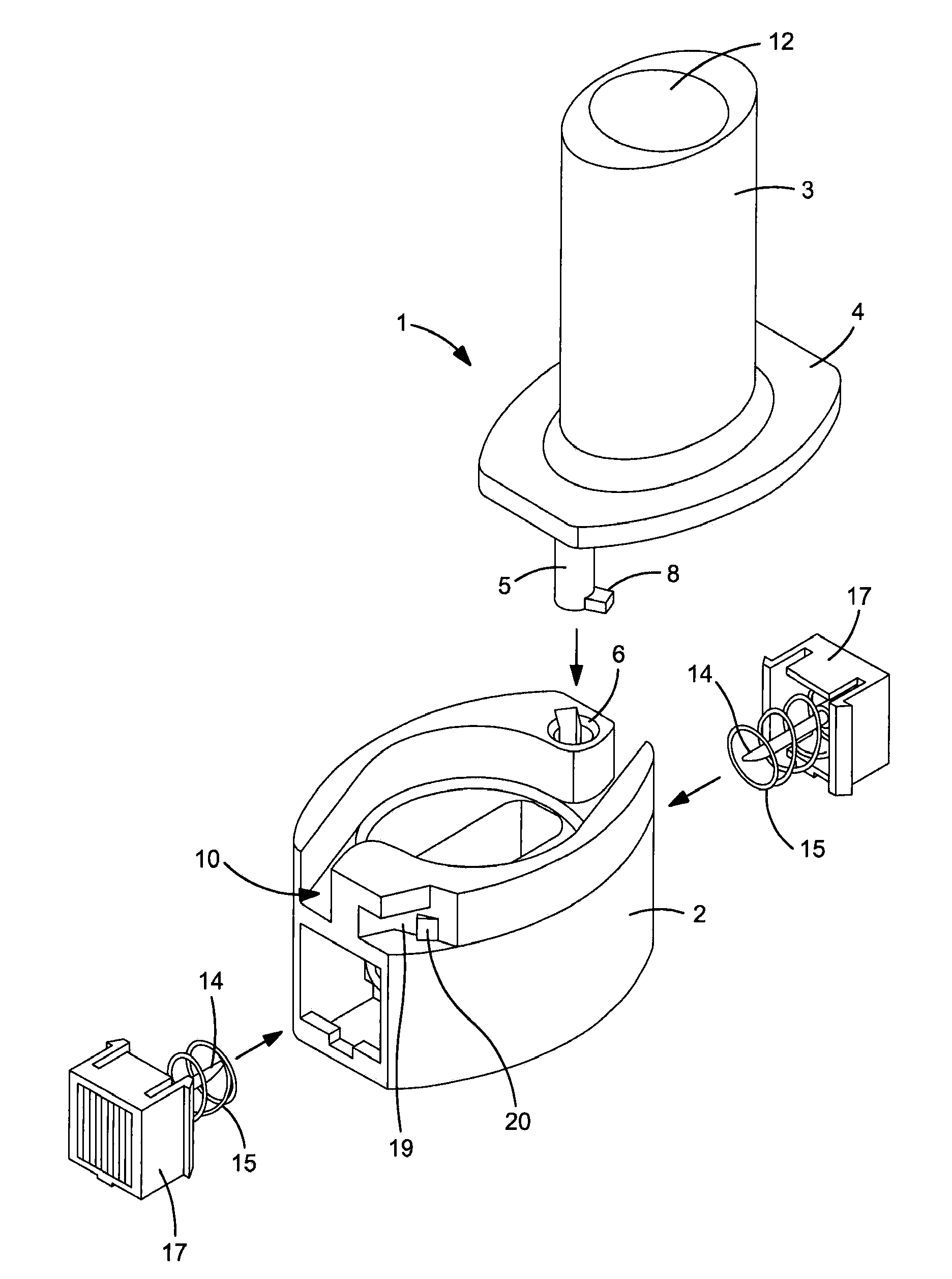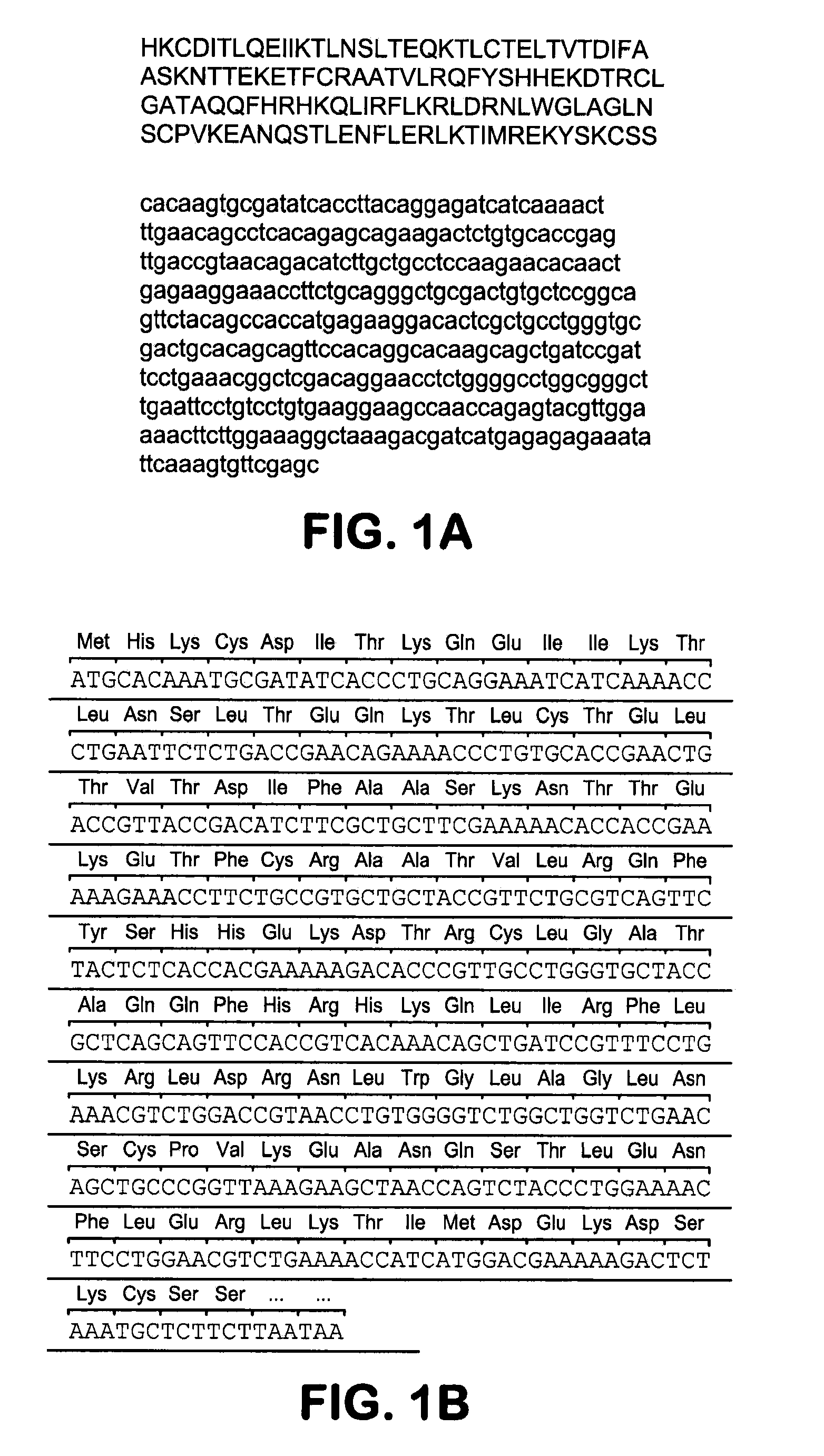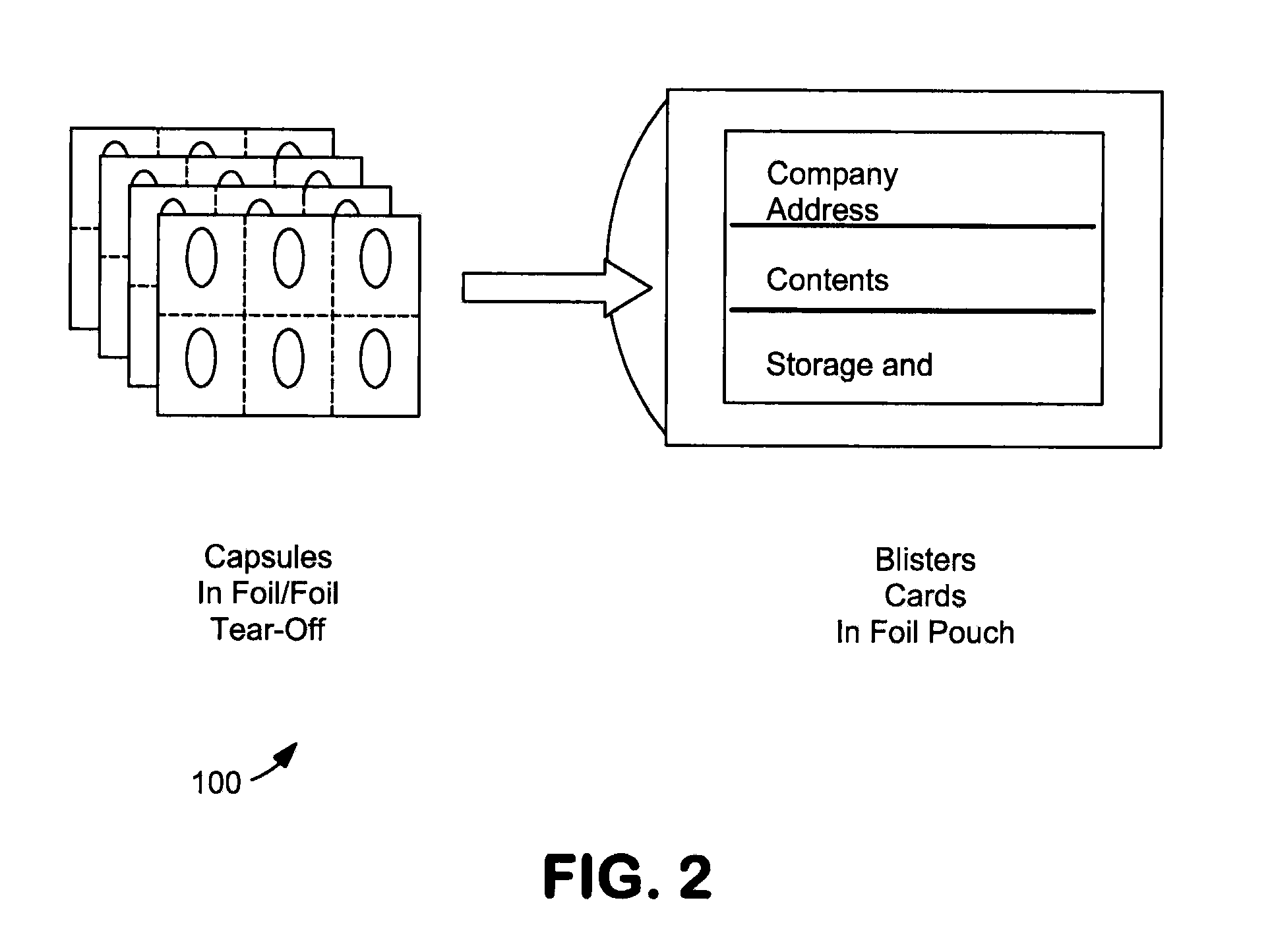Pharmaceutical polypeptide dry powder aerosol formulation and method of preparation
a technology of dry powder and polypeptide, which is applied in the field of dry powder aerosol compositions, can solve the problems of short half-life of mil-4 proteins, frequent injection, etc., and achieve the effects of high deposited fraction, easy dispersibility, and sufficient purity
- Summary
- Abstract
- Description
- Claims
- Application Information
AI Technical Summary
Benefits of technology
Problems solved by technology
Method used
Image
Examples
example 1
Preparation of Formulations
[0100]Four formulations, each comprising the active ingredient mIL-4, were prepared by combining the components into a solution, as shown in Table 1. Subsequent tests and evaluations discussed in the examples that follow refer to them as Formulations 1-4, as shown in Table 1.
TABLE 1Summary of mIL-4 Containing FormulationsSodiumSodium FormulationmIL-4CitrateSucroseLactate#Formulation(% w / w)(% w / w)(% w / w)(% w / w)1Citrate pH 5.088122Citrate / Sucrose541234pH 5.03Lactate pH 4.09824Lactate / Sucrose54442pH 4.0
example 2
Method of Making Dry Powder
[0101]The spray drying parameters used to manufacture formulations 1-4 are summarized in Table 2.
TABLE 2Parameters Used for Spray Drying mIL-4 FormulationsParameterSettingEquipmentBuchi B-191 with Std CycloneNozzle Size0.7 mmNozzle Cooling5° C.Feedstock CoolingIce bathSpray rate (g / min)Approximately 4.7Inlet Temperature (° C.)100-115 (steady state 108)Outlet temperature (° C.)60Air flow setting85% aspirationNozzle Gas FlowInlet Regulator setting of 95 psi and flow control reading 750 mmSecondary drying shelf temperature (° C.)20Secondary drying vacuum pressure (mtorr)Secondary drying duration (hours)2
example 3
Studies of Mass of Active Component in Composition and Aggregation of the Protein
[0102]The content and purity of each formulation was determined by analyzing approximately 20 mg of powder by a RP-HPLC assay method. Three determinations were performed for each powder and the percent by weight was calculated. Table 3 shows the assay results for each formulation. The results are consistent with the theoretical values.
TABLE 3Summary of Assay Data Obtained on mIL-4 FormulationsTheoreticalFormu-mIL-4Mean mIL 4Mean mIL-4lationConcentration ConcentrationConcentrationNo.Composition(% w / w)1(% w / w)2(% w / w)31mIL-4 / Citrate888679.82mIL-4 / Citrate / 545451.0Sucrose3mIL-4 / Lactate989490.64mIL-4 / Lactate / 544639.9Sucrose1Based on ~2% mIL-4 solids content prepared aqueous solutions.2By HPLC analysis at site 1 (n = 3 determinations).3By HPLC analysis at site 2 (n = 3 determinations).
[0103]The greatest deviation was observed in Formulation 4 where the measured concentration was approximately 8% lower than th...
PUM
| Property | Measurement | Unit |
|---|---|---|
| storage temperature | aaaaa | aaaaa |
| aerodynamic diameter size | aaaaa | aaaaa |
| aerodynamic diameter size | aaaaa | aaaaa |
Abstract
Description
Claims
Application Information
 Login to View More
Login to View More - R&D
- Intellectual Property
- Life Sciences
- Materials
- Tech Scout
- Unparalleled Data Quality
- Higher Quality Content
- 60% Fewer Hallucinations
Browse by: Latest US Patents, China's latest patents, Technical Efficacy Thesaurus, Application Domain, Technology Topic, Popular Technical Reports.
© 2025 PatSnap. All rights reserved.Legal|Privacy policy|Modern Slavery Act Transparency Statement|Sitemap|About US| Contact US: help@patsnap.com



